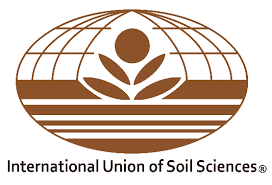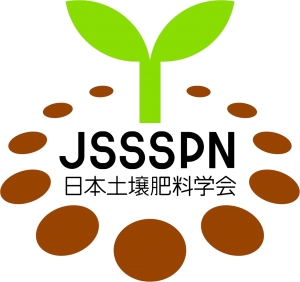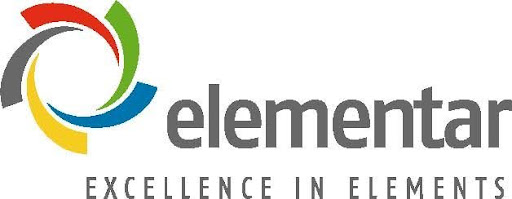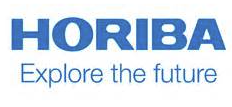
Welcome
Presentation
Scientific Program (tentative)
Oct 14 (Mon)
Evening Welcome Party (17:00-21:00) light meals & drinks
Oct 15 (Tue)
Opening Ceremony: Welcome speech (organizer & OECD-CRP Theme 1 co-ordinator)
Session 1. Fundamental aspect of ISMOM: challenges & opportunities
- Session keynote & 6 oral presentations
- Lunch
- 4 oral presentations & open discussion
- Poster session 1
Oct 16 (Wed)
Session 2. Soil structure as physical constraints of the interfacial reactions among minerals, organic matter, and microbes
- Session keynote, 6 oral presentations, and open discussion
- Lunch
- Poster session 2 & 3
Session 3. New concepts and approaches: Methodological and conceptual advances
- Session keynote and 5 oral presentations
- Gala Dinner
Oct 17 (Thurs)
Session 4. ISMOM and biogeochemical cycling across scale
- Session keynote & 7 oral presentations
- Lunch
Session 5. ISMOM as a basis for soil carbon management
- Session keynote 3 oral presentations, and panel discussion
- Poster session 4, 5 & 6
Oct 18 (Fri)
Session 6. The role of organo-mineral-microbial interactions in soil management and policy making: Implications for climate change and C credit markets
- Session keynote & 2 oral presentations
- Rap-up panel discussion
PM Huang prize talk
Closing Ceremony
Special session:
ISMOM as a basis for soil management and policy making
Invited Speakers
This symposium is sponsored by the OECD’s Co-operative Research Programme: Sustainable Agricultural and Systems, which provides financial support for most of the keynote speakers
- Denis Angers

- Denis Angers is a Honorary Research Scientist with AAFC and Adjunct Professor at Université Laval in Québec City, Canada. He has over 35 years of experience in researching C and N cycles in soils, with the overall objective of reducing soil degradation and greenhouse gas emissions. He has worked on agricultural systems across Canada and internationally. He contributed to the development of the Canadian Agricultural GHG Accounting System. He is former President and Fellow of the CSSS, Fellow of the SSSA, Member of the French Academy of Agriculture, and was awarded a Doctorate Honoris Causa from Institut-Agro in France. He has contributed to the IPCC 6th Assessment Report.
- Asmeret Asefaw Berhe
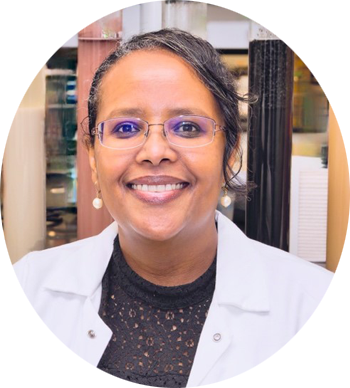
- Dr. Asmeret Asefaw Berhe is a Professor of Soil Biogeochemistry and Falasco Chair in Earth Sciences and Geology at the Department of Life and Environmental Sciences, University of California, Merced. She previously served as the Director of the US Department of Energy’s Office of Science. Her research interest lies at the intersection of soil science, geochemistry, global change science, and political ecology. Prof. Berhe’s work seeks to improve our understanding of how the soil system regulates the earth’s climate and the dynamic two-way relationship between soil and human communities. Numerous awards and honors have recognized her scholarly contributions and efforts to improve equity and inclusion in STEM. She is an Elected member of the US National Academy of Engineering, a Fellow of the American Geophysical Union and the Geological Society of America, and a member of the inaugural class of the US National Academies of Science, Engineering, and Medicine's New Voices in Science, Engineering, and Medicine.
- Claire Chenu

- Claire Chenu is Research Director at INRAE and professor of soil science at AgroParisTech. Her research deals with soil organic matter which provides essential ecosystem services and is essential to adaptation to and mitigation of climate change via carbon sequestration. She is very involved in the science-policy-practice interface and in awareness raising activities on soils. She has been nominated Special Ambassador of soils in 2015 by the FAO. She chairs the scientific technical and innovation committee of the French network of soil experts Rnest Sol, and is a member of the Scientific and Technical Committee of the 4 per 1000 initiative. In 2019, she was the EGU soil science medallist and received the INRA Lifetime Achievement Award. She coordinates the European Joint research Programem EJP SOIL on agricultural soil management, that joins efforts of research institutes and universities from 24 European countries.
- Jon Chorover
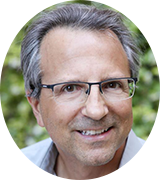
- Jon Chorover is a professor of soil biogeochemistry in the Department of Environmental Science at the University of Arizona. His research focuses on how soil geochemical reactions - including mineral and metal(loid) transformations - are mediated by gas and water flows and associated biological activity. His work seeks to connect molecular to catchment scales of inquiry in critical zone science, and his team conducts coupled field and laboratory studies on systems that range from those that are relatively pristine to those that are highly disturbed and contaminated.
- Sebastian Doetterl

- Sebastian Doetterl is a Physical Geographer with a special focus on soil development. He is working as an Assistant Professor for Soil Resources at ETH Zurich and co-founder of the Congo Biogeochemistry Observatory. His research is oriented towards carbon and nutrient dynamics across geo-climatic gradients with a focus on the effects of anthropogenic disturbances on soil development. He is particularly interested in bridging the gap between process understanding from experimental data to model development and the spatial representation of biogeochemical cycles. He has been working on soil development and its consequences for biogeochemical cycles in a large variety of ecosystems, pedo-climatic gradients and chronosequences, with his latest focus being on tropical African landscapes and large scale geochemical transects in the Arctic.
- Guillaume Guère
- Head of the Agriculture and Resource Policies Division, Trade and Agriculture Directorate, OECD
- Anke Herrmann
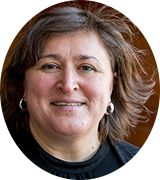
- Anke Herrmann is a soil biogeochemist working at the Swedish University of Agricultural Sciences, Sweden. Since 2020, she is Chair Professor of the Soil Nutrient Cycling group. Her research focuses on the dynamics of organic matter in various terrestrial ecosystems with a special emphasis on the interactions between soil organic matter, the community composition of the soil biota and their microbial habitats. In recent years, she is pushing the realm of soil science into new territory by exploring the manifestation of physico-chemical theorems such as thermodynamic principles in eco-system dynamics.
- Qiaoyun Huang
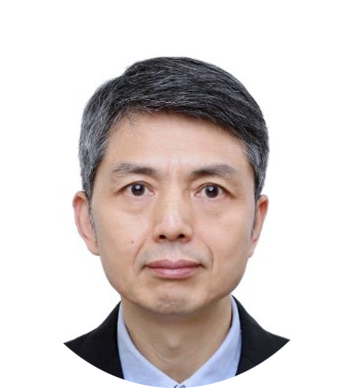
- Dr. Qiaoyun Huang is a professor of soil & environmental microbiology at Faculty of Resources and Environment, vice director of National Key Laboratory of Agricultural Microbiology, Huazhong Agricultural University, China. His research focuses on the interfacial processes of soil mineral-organic matter-microorganism interactions and environmental impacts related soil carbon cycling and remediation of heavy metals. He has published more than 360 peer-review papers and book chapters with an h-index of 56. He is currently the international scientific member of the International Society for Environmental Biogeochemistry and the editor of Applied Soil Ecology. He is a frequent speaker and organizer of international conferences and symposia including the Chairman of the 4th International Symposium on Interactions of Soil Minerals with Organic Matter and Microorganisms (2004), and the 21st International Symposium on Environmental Biogeochemistry (2013). Dr. Huang was a recipient of the Changjiang Scholar Professor by Ministry of Education of China, the Distinguished Young Scholar by NSFC and the Outstanding Achievement Award by Soil Science Society of China.
- Motoo Ito
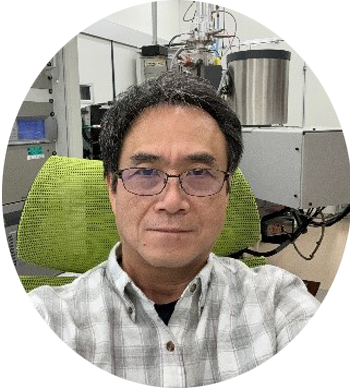
- Motoo ITO (PhD in Chemistry, Gakushuin University) is a planetary scientist who works at JAMSTEC (Japan Agency for Marine-Earth Science and Technology). He has worked on a wide range of research topics related to Cosmochemistry, including: (1) formation process of the first Solar System solids, (2) thermal history of primitive meteorite parent bodies, (3) diffusion kinetic parameters in silicates and oxides, (4) organic and mineralogical characterization of extraterrestrial samples returned by the space agencies of NASA and JAXA. In these endeavors, he has become proficient at using various Secondary Ion Mass Spectroscopy (SIMS) instruments over the past 30 years, including NanoSIMS (nano-scale SIMS). He also has developed new techniques for high-quality isotopic/elemental abundance measurements on the sub micrometer-scale level, isotope/elemental maps with ultra-high-resolution for a variety of samples (e.g., microbes, terrestrial minerals, seaweed, organic matter).
- Christina Kaiser
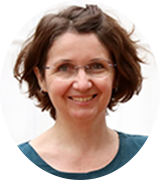
- Christina Kaiser is a soil ecologist focusing on the interplay between soil microbial ecology, biogeochemistry and complex systems science. She uses spatially explicit, individual-based modelling and experimental approaches to study how microbial interactions at the microscale lead to emergent behaviour of soil microbial ecosystems at the macroscale. In addition, she has a deep interest in the mycorrhizal symbiosis which she studies from various perspectives. She is currently leading a research group as an Associate Professor at the Centre for Microbiology and Environmental Systems Science of the University of Vienna.
- Heike Knicker
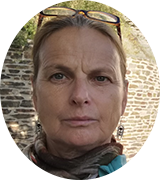
-
Heike Knicker is a Research Professor at the “Instituto de la Grasa” (IG-CSIC) in Seville, Spain, where she is the head of the research group “Interactions between Soils, Plants and Microorganisms” of the Department of Food Biotechnology.
Most of her research is dedicated to soil biochemistry. During the last decade, the study of the structure of biochar and the impact of its use as soil amendment on soil biochemical processes and plant development became a major topic of her scientific activity. A further research topic represents the study of the impact of changing environments and climate change on the quality and quantity of soil organic matter (SOM). She is also highly interested in advancing analytical tools - in particular solid-state NMR spectroscopy - for an improved understanding of processes involved in SOM formation. In 2016, she was awarded the Philippe Duchaufour Medal of the European Geosciences Union for outstanding research in the field of SOM research. - Alexandra Kravchenko
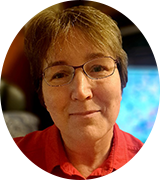
- Alexandra Kravchenko received her PhD in Soil Science in 1997 from the University of Wyoming, WY, USA. From 1997-2001 she worked as a postdoctoral researcher at the Univ. of Illinois, Champaign-Urbana. Since 2001 she has been at Michigan State University, MI, USA, first in Assistant, then Associate, and now in a Full Professor capacity. Dr. Kravchenko is a Fellow of Soil Science Society of America and of American Society of Agronomy, a recipient of Alexander von Humbold Research Award, and Don and Betty Kirkham Soil Physics Award. Her research focuses on micro-scale physical processes driving soil microbial activities and soil C protection, as well as interactions between soil physical and biochemical processes at micro scales. She authored/co-authored >150 peer-reviewed works, including publications in Nature Communications, Nature Geoscience, and PNAS.
- Francisco Javier Matus

- Francisco Javier Matus is Agronomist (Chile). He earned his PhD at Wageningen Agricultural University in the Netherlands, specializing in plant nutrition and soil fertility. He served as Director of the Department of Agricultural Production at the University of Talca in Chile until 2006. In 2009, Carleton University and Agriculture and Agri-food Canada invited him as a postdoctoral fellow to join a government project to improve the nitrogen use efficiency in extensive crops, studies that led to a patent. His research focuses on the dynamics of nitrogen and organic carbon in volcanic soils and extreme environments (e.g., Antarctica). He is currently the director of the PhD Program in Natural Resources Sciences at La Frontera University and Director of the Laboratory of Conservation and Dynamics of Volcanic Soils.
Committees
Organizing Committee:
Maki Asano (Univ. Tsukuba, Japan)
Kazumichi Fujii (FFPRI, Japan)
Jumpei Fukumasu (NARO, Japan)
Natsuko Hamamura (Kyushu Univ., Japan)
Nagamitsu Maie (Kitasato Univ., Japan)
Satoshi Mitsunobu (Ehime Univ., Japan)
Atsushi Nakao (Kyoto Prefectural Univ., Japan)
Rota Wagai (Executive Committee Chair, NARO, Japan)
Noriko Yamaguchi (NARO, Japan)
Yuji Yamashita (Univ. Tsukuba, Japan)
Scientific Committee:
Deborah P. Dick (Univ. Rio Grande do Sul, Brazil)
Mark Farrell (CISRO, Australia)
Xiaojuan Feng (CAS - Inst. of Botany, China)
Kate Heckman (USDA-Forest Service, USA)
Klaus Kaiser (Martin Luther University, Germany)
Carsten Mueller (Tech. Univ. Berlin, Germany)
Atsushi Nakao (Kyoto Prefectural Univ., Japan)
Naoise Nunan (CNRS/Sorbonne Université, France)
Rota Wagai (NARO, Japan)
Fees and Dates
Important Dates:
Feb 15: Tentative program announcement
March 4: Call for Abstracts & pre-registration (for abstract submission)
May 1: Abstract deadline
June 15: Acceptance/Rejection Notification
Registration open for conference* and field trip**
* We recommend to register early because we will have to close the registration when the attendee’s number reaches roughly 200.
** Field trip is limited to ca 25 people.
July 31: End of early bird registration
August 31: Registration deadline**
Sept 30: Final program announcement
Oct 14: Evening reception
Oct 15-18: ISMOM symposium
Oct 18-20: Field trip***
***The tentative field trip plan is to visit Andisol and Paddy soil profiles, temples (Nikko World Heritage Site), mountain landscape, and a hot spring in Tochigi, Japan
Fees:
| Student1 | Regular Participant1 |
Accompanying person1 |
|
|---|---|---|---|
| Early Bird | ¥50,000 | ¥70,000 | ¥32,000 |
| After August 1, 2024 |
¥60,000 | ¥84,000 | ¥32,000 |
Notes:
1Registration fee include welcome reception, lunch (Tues to Thurs), a gala dinner, coffee/snacks, and tax.
2For the post-conference field trip, please register separately (additional fee will be requested) .
3Travel support for students and scientists from low-income countries: we applied funding for this to IUSS. We will hear the results by the end of March.
4Visa may be required for participants from certain countries (e.g., China, India). Please check here if you need a visa or not. It is the participant’s responsibility to prepare visa. We can provide supporting documents but only after the completion of your registration. For further questions, please contact: ismom2024-VISA@ml.affrc.go.jp
Abstracts & pre-registration (for abstract submission)
Pre-registrationYou can submit up to two abstracts. In this case, please register and make 2000 yen payment for each abstract separately.
Please note that official abstract submission won’t be completed without making the payment by credit card.
We will issue the receipt of all payments (abstract processing fee, conference registration, and, if applicable, field trip) on Oct 19th, the day after ISMOM 2024 is completed. You can download the receipt from “My Page” which will be created upon your registration.
March 4: Call for Abstracts & pre-registration (for abstract submission)
May 1: Abstract deadline
Venue
Tsukuba & surroundings
Tsukuba is known as a science city where many national and private research institutes and associated museums are located. You can also take a bus to Mt. Tsukuba, a popular hiking spot. Here are some tips for places worth visiting around Tsukuba. They are accessible by bus from Tsukuba center.


- Mount Tsukuba
- Mt. Tsukuba is an 877 m mountain located in the northern part of Tsukuba. You can reach the foothill of Mt. Tsukuba by bus from Tsukuba station. There are hiking trails popular for all ages including children. You can also take a cable car / ropeway, reaching to the top where you can enjoy a panoramic view of the Kanto area and several restaurants and shops.
- Tsukubasan shrine
- Tsukuba shrine is located in the foothill of Mt. Tsukuba, so before starting to hike on the mountain trails you can stop by the shrine. Tsukubasan shrine is dedicated to the deity of family safety, harmony within marriage and matchmaking.
- Tsukuba space center
- Tsukuba space center, operated by JAXA (Japan Aerospace Exploration Agency), has some space exhibitions. Take a bus from Tsukuba station to the space center (10 mins ride)
- Tsukuba botanical garden
- The Tsukuba botanical garden, one of the largest research gardens in Japan, is associated with the National Museum of Nature and Science. Both domestic and exotic plants spanning temperate and tropical regions can be observed. To get there, take a bus from Tsukuba center (9 mins ride).
- Geological museum
- The geological museum is associated with the National Institute of Advanced Industrial Science and Technology. The museum displays the collection that totals some 150,000 rock, mineral, and fossil specimens. Take a bus from Tsukuba center to the bus stop near the museum (8 mins ride + 7 mins walk)


To find more information on activity around Tsukuba, see the following links:
https://matcha-jp.com/en/tsukuba
https://en.japantravel.com/ibaraki/tsukuba
https://www.tripadvisor.com/Attractions-g298167-Activities-Tsukuba_Ibaraki_Prefecture_Kanto.html
https://www.city.tsukuba.lg.jp/tourism/index.html
Getting to Tsukuba
In the Tokyo area there are two international airports, Narita and Haneda. Both airports are then connected to Tsukuba by bus or trains. Note that Tsukuba (bus) center and Tsukuba (train) station are located in the same place. The hotel where the venue will take place is an 11-minute walk from Tsukuba center. Below are some tips on how to get to Tsukuba from the airports.
- By bus: there is a direct bus service from Haneda airport to Tsukuba center but only twice a day (travel time: about 2 hours); therefore, taking trains would be more convenient.
- By train: at the airport you need to take the Tokyo monorail to the last stop, Hamamatsucho station. Then change to the Yamanote or Keihin line bound for Tokyo/Ueno and get off at Akihabara station. At Akihabara station, take the Tsukuba express line to the last stop, Tsukuba station. Total travel time is approximately 2 hours.
- By bus: the most convenient way is to take a direct bus from Narita airport to Tsukuba station (6 services a day; travel time: 1 hour). Here is the bus time table: http://nariku.co.jp/kousoku/tsukuba.html
- By train: there are also ways to get to Tsukuba station by train. One option is to, at the airport, take the Keisei Narita sky access line heading toward Haneda airport terminal 1 & 2, and get off at Higashi-Matsudo station. Then take the Musashino line bound for Fuchuhommachi and get off at Minami-Nagareyama station. Then take the Tsukuba Express line to the last stop, Tsukuba station. The train trip takes about 2 hours.
Conference location
The venue will take place in the conference facilities of Hotel Grand Shinonome.
Address: 488-1, Onozaki, Tsukuba, Ibaraki, 305-0034, Japan
Email: tomari@hg-shinonome.co.jp
Tel: +81 29-856-2211
Website: https://www.hg-shinonome.co.jp/english/
The hotel is just an 11-minute walk from Tsukuba station/center. It is therefore close to downtown and has good access to major tourist attractions around Tsukuba by local buses available at Tsukuba center. Upon arrival at the hotel, you will see a beautiful, traditional Japanese garden.
For further information on access to the hotel, see the following link:
https://www.hg-shinonome.co.jp/english/access.html
- Welcome Reception: evening on Oct 14, 2024
- Gala dinner: served at Hotel Grand Shinonome on Oct 16, 2024
- Japanese lunch: including sushi served at a restaurant nearby (on Oct 17, 2024)


Conference guide
Accommodation
We encourage you to stay in Hotel Grand Shinonome where the conference will be held for your convenience, good price, and for lively interactions with other participants. But we also list several other hotel options in a walking distance.
-
1. HOTEL GRAND SHINONOME
488-1, Onozaki, Tsukuba, Ibaraki, 305-0034, Japan


- The building made of Japanese Cypress right at the city center of Tsukuba is Hotel Grand Shinonome. There are a total of 115 guest rooms. You can select the room from the main tower and the west tower.
- The main tower rooms have a relaxing interior with Japanese taste using cypress.
- The west tower rooms are decorated with a wooden tone and a bright soft light that shines through a large window to make you feel warm.


- Price: The accommodation plans below are applied for 4 nights from October 14, 2024.
- Be sure to complete your registration first to get your password to book the room for the listed price.
Room type Number of guests Price per night Your choice Main tower-Twin room
2 single beds13,200 JPY No meals 16,280 JPY Breakfast included 9,000 JPY No meals 10,540 JPY Breakfast included West tower-Twin room
2 single beds13,200 JPY No meals 16,280 JPY Breakfast included 9,000 JPY No meals 10,540 JPY Breakfast included Main tower-Single room
1 single bed6,600 JPY No meals 8,140 JPY Breakfast included West tower-Single room
1 wide double bed10,000 JPY No meals 13,080 JPY Breakfast included 6,600 JPY No meals 8,140 JPY Breakfast included Tax and service charges are included.
Pay at the property.
Be sure to finish your registration first to get your password to book this accommodation.
Above accommodation plans apply to 4 nights from October 14, 2024.Please make your reservations separately for stays before October 14 or after October 18.
If you’d like to use the above plans, you must make your reservation by “September 13”. After that date, you will not be able to book these plans.book -
2. List of other hotels nearby
Accommodations near the venue are as follows. No special plans are available, so please book these hotels yourself using the hotel's websites or hotel booking tools (e.g. booking.com).
- Hotel Nikko Tsukuba (https://www.nikko-tsukuba.com/eng/)
- Daiwa Roynet Hotel Tsukuba (https://www.daiwaroynet.jp/en/tsukuba/)
- Hotel JAL City Tsukuba (https://www.tsukuba.hoteljalcity.com/eng/)
- Business Hotel Sankyu (https://tsukuba39.com/)
- Hotel Matsushima (http://www.hotelmatsushima.co.jp/summry.htm)
- Tsukuba SKY Hotel (https://en.55-hotels.com/tsukuba-sky)
Contact us
For general inquiry:
Rota Wagai (and Jumpei Fukumasu)
E-mail: ISMOM2024-info@ml.affrc.go.jp
For VISA information:
Rota Wagai (and Jumpei Fukumasu)
E-mail: ISMOM2024-VISA@ml.affrc.go.jp
For field trip information:
Kazumichi Fujii (Rota Wagai, and Jumpei Fukumasu)
E-mail: ISMOM2024-field_trip@ml.affrc.go.jp
For P.M. Huang Prize:
Email: ISMOM2024-HuangPrize@ml.affrc.go.jp
Field Trips
We offer two post-conference field trips to see unique soils and cultures of Japan. Note you need to register for ISMOM conference first before the registration for these trips.
- Trip 1 (Oct 18-20/ max: 20 people/ ca 60,000 yen)
- Trip 2 (Oct 19/ max: 45 people/ ca 6,000 yen)
Trip 1. World Heritage site(Nikko Toshogu) & Soils (volcanic & paddy)
We are preparing one post-congress tour to visit World Heritage site “Nikko Toshogu shrine”, Kegon Fall, two volcanic soil profiles, one paddy soil site, and the Bonsai museum on 18th to 20th October, 2024 (3days, 2 nights). The tour will provide amazing experience of the natural landscape (soil and hot spring) of volcanic region and introduce the history as well as the culture of Japan. The price is 60,000 JPY (approximately 500 USD, Food and accommodation costs are included). Capacity is limited to 25 persons on a first-come, first-served basis. Participants’ family can also join in field-trip.

Nikko National Park is characterized by landscapes created by past volcanic activities. Participants can observe two soil profiles (2 m deep and 10 m deep). Andisol or Andosol profile named “three color ice cream” is a historical one that changed soil classification systems because of the uniqueness of black soil derived from volcanic materials.
Nikko Toshogu shrine is dedicated to Tokugawa Ieyasu, the founder of the Tokugawa shogunate. It was initially built in 1617, during the Edo period, while Ieyasu's son Hidetada was shogun. Beautiful and historical buildings, gates, and carvings are registered as UNESCO World Heritage Site. Initial soil genesis nu moss and lichen can also be observed on rocks and lanterns.
Chuzenji lake and Kegon falls were formed through volcanic activities of Nikko mountains (Mt. Nantaisan) (lava flows). The main falls had a height of approximately 97 meters. Participants can also enjoy observing andesite weathering and hot springs in hotel.
Bonsai art museum (Omiya) is museum of Bonsai, the Japanese art of growing and shaping miniature pine trees in containers with volcanic soils. The excursion will finish at Omiya station before lunch on 20th October 2024.
Contact: ISMOM2024-field_trip@ml.affrc.go.jp
Organizer: Kazumichi Fujii, Forestry and Forest Products Research Institute
Schedule
Oct 18
12:00 Departure from Tsukuba (Conference Hall) >> 14:00-16:00 Imaichi (Tochigi prefecture) Volcanic soil profile (three colored ice cream soil) >> 17:00 Oku-Nikko hotel (traditional dinner & hot spring) >> Discussion
Oct 19
9:00 Kegon Falls >> 11:00-14:00 Nikko Toshogu shrine >> 15:00-17:00 Great volcanic soil profile (approximately 10 m deep) >> 18:00 Hotel near Omiya station (Saitama)
Oct 20
9:00 Bonsai museum >> 11:00 Paddy soil site >> 12:00 Omiya station*
*From this train station (https://en.japantravel.com/saitama/jr-omiya-station/8048), you can access to major stations (e.g., Tokyo) and airports (Haneda and Narita) in 1-3 hours.
Notes:
1We don’t have travel insurance for the tour. So please have your own travel insurance if you think necessary. But no serious outdoor activities are involved in this tour.
2All meals during the trip are provided.
3For the hotel in Oct 18th, we will stay in traditional Japanese rooms (4 persons/room) with Japanese futon on tatami floor.
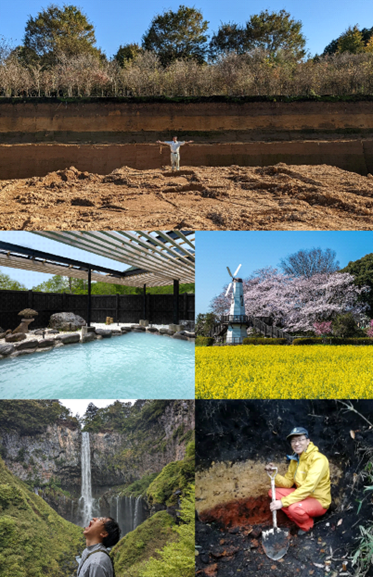
Soils are waiting for your participation!
Trip 2. A day trip around Tsukuba (Oct 19th: volcanic soil profile, Mt. Tsukuba shrine, traditional town tour)
- Oct 19 (9AM to 5PM)
- Departure from Hotel Grand Shinonome
- Observation of 1 or 2 volcanic soil profiles (allophanic Andisol pedons)
- Lunch: Japanese style (Bento or restaurant)
- Visit a traditional shrine or a temple on the foothill of Mt. Tsukuba
- Mt. Tsukuba Shrine: https://en.wikipedia.org/wiki/Tsukubasan_Shrine
- Yakuouin Temple: https://www.ibarakiguide.jp/spot.php?mode=detail&code=717
- Walk around the traditional town of Hojo:
- Hojo town (the rural area known for its branded rice on Satoyama landscape)
- Hojo town infor (in Japanese): https://tsukuba-hojo.jp/highlights/
- -Former residences (nationally registered tangible cultural property)
- -Former Yanaka's House, 170-years-old Mercantile House
- -Rice ice-cream, etc
Sponsors
Sponsors
Supporting Organizations


PM Huang Prize
In honor of Dr. P.M. Huang for his pioneering works and leadership in this field, prize is awarded every 4 years by IUSS Commission 2.5 significant contributions to advancing the understanding of the interactions between soil minerals, soil organic matter, and soil organisms.
The successful candidate will be elected in recognition of his/her scientific research, or a publication that is deemed to have made significant contributions to advancing the understanding of the interactions between soil minerals, soil organic matter, and soil organisms. The publication may be books, book chapters, review articles, or a peer reviewed research articles published in a scientific journal. The publication must have been printed (on the web or in print) for at least 4 years, so as to permit sufficient time for the Award Committee to evaluate its impact.
Preference will be given to young or mid-career candidates, and to candidates who have been active in ISMOM. The selected scientist will be awarded at ISMOM 2024 (October 15-18, Tsukuba, Japan).
To apply, please prepare the following items and send to the following address: ISMOM2024-HuangPrize@ml.affrc.go.jp (deadline: May 15, 2024)
Also please help us announce this opportunity. You can download the flyer here.
- The candidate’s name, position and contact information.
- A copy of the candidate’s Curriculum Vitae.
- List of the five most important publications authored by the nominee that in the nominator’s opinion had a significant impact in the focus areas of ISMOM.
- An explanation of what the candidate has accomplished and of how this has contributed to the scientific endeavors of ISMOM (Maximum of one page, font size: 12-point).
- Name, position and contact information for nominator
For more details on PM Huang Prize and the application process, please see the link below.
https://www.iuss.org/about-the-iuss/awards-prizes/pan-ming-huang-prize/
https://old.iuss.org/about-the-iuss/awards-prizes/pan-ming-huang-prize/index.html
Note that candidates can apply without being nominated. However, we request the name of the nominator who recommends the candidate.
